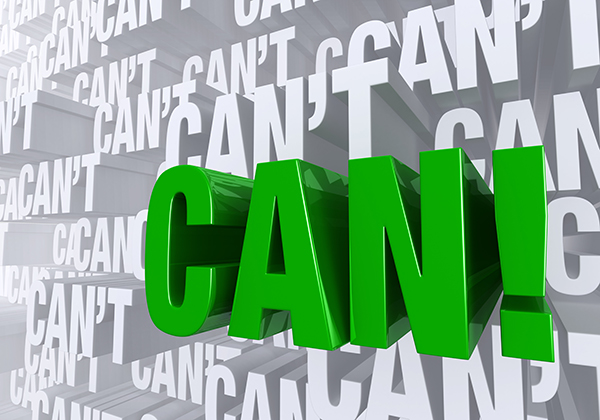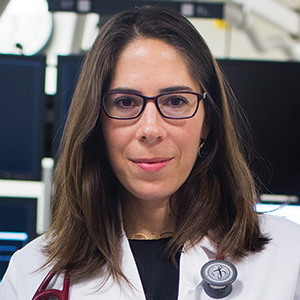Innovation at ACC | From Concept to Development to Market: My Journey Innovation
 Levit holding the device she designed to deliver therapeutic hydrogels. Click image above for a larger view.
Levit holding the device she designed to deliver therapeutic hydrogels. Click image above for a larger view.
Like medical school, residency and fellowship, developing a medical device is long, tedious and expensive. While few trainees drop out of medical school and residency, the chance of success for device development is slim. My journey in innovation started during three years of postdoctoral research during my cardiology fellowship. I was studying the ability of biocompatible hydrogels to increase the retention of stem cells delivered to the heart after myocardial infarction.1
I realized it would be difficult to deliver these gels to patients without open heart surgery. Gel delivered by intracoronary catheter injection would thrombose and intramyocardial injection risks embolic stroke. My solution? Develop a device to deliver therapeutic hydrogels into the pericardial space. This idea was sparked by procedures performed in the “dry” pericardial space such as arrhythmia ablation.
The idea is working! We’ve shown functionality in preclinical testing and published the results.2,3 However the technology is several years and millions of dollars away from clinical use. As a physician-scientist, I’m uniquely positioned as a bridge between emerging therapeutics and clinically optimal delivery methods. Why let others bridge the gap? There are costs and tradeoffs to pursuing this type of research early in one’s career. And potential payoffs. Here are some reflections on how I have fit this device development project within the first four years of my faculty position.
Early Career: The Time For Technology Development
My first meeting on my first day as an assistant professor was to pitch my hydrogel delivery device for a grant. On the same day, I acquired new responsibilities teaching residents and fellows, running and funding my research lab, and building and maintaining my clinical practice. Balancing these sometimes conflicting responsibilities is a constant feature of academic life. Therefore, there may never be a good time to start a project like this, I’ve found some benefits to starting early in my career.
In the first few years of building my clinical practice, I have more flexibility than I’ll have later when I have a larger patient load and requirements for clinical productivity. Starting a research academic job, I have the flexibility offered by my startup package, which allows development of new avenues of research not specifically grant funded. I’ve simultaneously worked towards National Institutes of Health (NIH) R01 funding for my lab — which I got in 2018 — and written grants for my device. Along with loosened time constraints, I’m in a unique position creatively. During training, I was exposed to a wide breadth of clinical settings and practice styles that has fostered new ideas to address pain points in need of clinical or practical solutions. I’m less entrenched in traditional practice patterns and able to see new solutions at the intersection of clinical medicine and research.
"My solution? Develop a device to deliver therapeutic hydrogels into the pericardial space." — Rebecca D. Levit, MD
However, there are risks. My time is the biggest investment and I was naïve about how much was needed to build my team of engineers, clinicians, scientists, business advisors and lawyers. Finding the money to pay for the development and research is also time consuming. I applied for more than 10 grants, ultimately receiving $750,000 in non-dilutive funding, but spent hundreds of hours in the process. Completing the experimental work, analyzing data and writing publications are all necessary but time consuming. How could I find the time for this without neglecting clinical or research duties that would put my academic position at risk? I parsed the large tasks, a grant application for example, into small parts that I could accomplish at night or when I had a spare 15 minutes during the day. This allowed me to make small and steady progress that over time resulted in continual forward momentum.
Alignment: Know and Align the Forces Against You

One way I mitigated the risks of the large investment of time was to align my technology development with my clinical and research responsibilities. A university or clinical practice may not see the benefit of pursuing technology development because of the financial effects. NIH grants I obtain for my research lab bring indirect fees to the university. Universities incentivize and often require NIH funding to sustain a research career. Patients I see and studies I read bring in direct revenue to my clinical practice. These activities are incentivized at performance reviews, by productivity bonuses and tenure promotion. Statistically there’s a very slim chance my device will make it to market. Time spent on my project is time not spent working on established revenue streams such as grants and patient care. Other components of the university, such as the technology transfer office, may encourage and support this pursuit, but ultimately do not directly affect my salary, performance review, promotion or tenure. Academic career success depends on success in traditional research and clinical pursuits.
I’ve been able to find areas to partially align the pressures of an academic research career with technology development. Naturally, my research interest partially overlaps with the technology and tells a cohesive story about who I am as a researcher. I can apply for grants, attend conferences and publish data from both components of my work. Grants obtained for the technology help build my track record of independent funding and support my research lab and salary. In 2018, I was awarded an NIH R01 for my lab research in which the technology publications helped bolster my publication record. Another pending R01 application includes the device in one of the aims. However generally NIH grants are too small to fund translational studies and study sections favor more mechanistic proposals.
"What keeps me going? More than my laboratory research or clinical work, this project has the greatest potential to affect the lives of a large number of patients." — Rebecca D. Levit, MD
Another alignment is the publication of two peer-reviewed papers about the delivery device technology.2,3 Publications validated the technology in the eyes of investors and help build my academic curriculum vitae, which has garnered awards and speaker invitations. To some degree, basic science projects benefit by having translational aspects and I’m using my lab research and device development to build a reputation as a translational researcher.
The key is to understand what factors will be used as markers of success in the eyes of entities that matter for your desired career path. When possible, create bridges not conflicts with your technology development purists.
Team: As Important as the Technology
The first time I attended an investment conference, I did my best to network for my company CorAmiTherapeutics. I started conversations with investors and gave my practiced elevator pitch. The investors asked how much money we’d raised and the funding source. After telling them (proudly) of the $750,000 in non-dilutive grants we received, they were not impressed. I soon realized their interest was in whether the technology had been validated yet by a large investment of “smart money,” not the actual device. The more tolerant investors asked about our path to market, clinical trial design, regulatory strategy, international intellectual patent designation, pharmacokinetic and toxicology testing, GMP manufacturing, prototype documentation, reimbursement codes, etc. My 11 years of training as a clinician-researcher had not prepared me for these practicalities of medical device development.
My team of technical collaborators, business advisors and strategists have been essential to carry forward aspects of the project beyond my expertise. Early on I received mentorship and guidance through the Coulter Foundation (whcf.org), the Georgia Research Alliance (gra.org) and other foundations, incubators and interest groups focused on translational science. Finding mentors willing to guide the business, regulatory and fundraising aspects has been key to our continued progress – and essential to move the technology out of the lab and into a truly translational space.
For me, the scientific and clinical application is my interest and motivation. By building my team I can leave the business development, market analysis, regulatory strategy and manufacturing controls to others, leaving space for my academic career.
Resilience: An Essential Resource

Every project will have moments of failure, setbacks and stalls. Our first device prototype failed during our very first cadaver test. Our first in vivo implant caused pericardial inflammation. A large grant application was delayed by six months (and eventually rejected) because of “irregularities” in an NIH study section.4 While I always believed in the merits of the project, supporters helped me keep the technical and spiritual momentum. With our team and collaborators, we overcame these setbacks. Talking with our engineer, we made design modifications that improved functionality. Consulting with clinical collaborators, we developed a successful anti-inflammatory strategy. Shifting the focus of the first gel from stem cells to amiodarone opened the commercially viable atrial fibrillation market.
What keeps me going? More than my laboratory research or clinical work, this project has the greatest potential to affect the lives of a large number of patients. It’s a project purely directed at translation, rather than understanding basic physiologic processes like my lab studies. It could offer treatment to many more patients than I ever could personally treat as a physician. I’ve watched as a wide array of therapeutics — viral vectors, biologics, nucleotides — have progressed from the bench towards the bedside. I believe our technology could be key to clinically feasible translation of these therapeutics. This possibility of improving patient care has been hugely motivating. When put in that light, the time, effort and risk is worth it.

Rebecca D. Levit, MD, is an assistant professor in the Division of Cardiology at Emory University School of Medicine. To learn more about her lab work on stem cell therapies for cardiovascular disease go to medicine.emory.edu/levit-lab. To learn more about her company, go to CorAmiTherapeutics.com. Follow her on Twitter @LevitLab.
References
- Levit RD, Landazuri N, Phelps EA, et al. J Am Heart Assoc 2013;2:e000367.
- Garcia JR, Campbell PF, Kumar G, et al. JACC: Basic to Translational Science 2017;2:601-9.
- Garcia JR, Campbell PF, Kumar G, et al. Circ Arrhythm Electrophysiol 2018;11: e006408.
- Lauer M. Assuring the Integrity of Peer Review. Available here.
Keywords: ACC Publications, Cardiology Magazine, Amiodarone, Arrhythmias, Cardiac, Atrial Fibrillation, Awards and Prizes, Biological Products, Cadaver, Curriculum, Documentation, Elevators and Escalators, Embolism, Faculty, Fellowships and Scholarships, Financial Management, Foundations, Hydrogels, Incubators, Developed Countries, Inflammation, Internship and Residency, Mentors, Motivation, Myocardial Infarction, National Institutes of Health (U.S.), Nucleotides, Pain, Patient Care, Pericardium, Public Opinion, Publications, Publishing, Research, Research Personnel, Salaries and Fringe Benefits, Schools, Medical, Stem Cells, Stroke, Technology Transfer, Thrombosis, Tocopherols, Training Support, Universities
< Back to Listings

